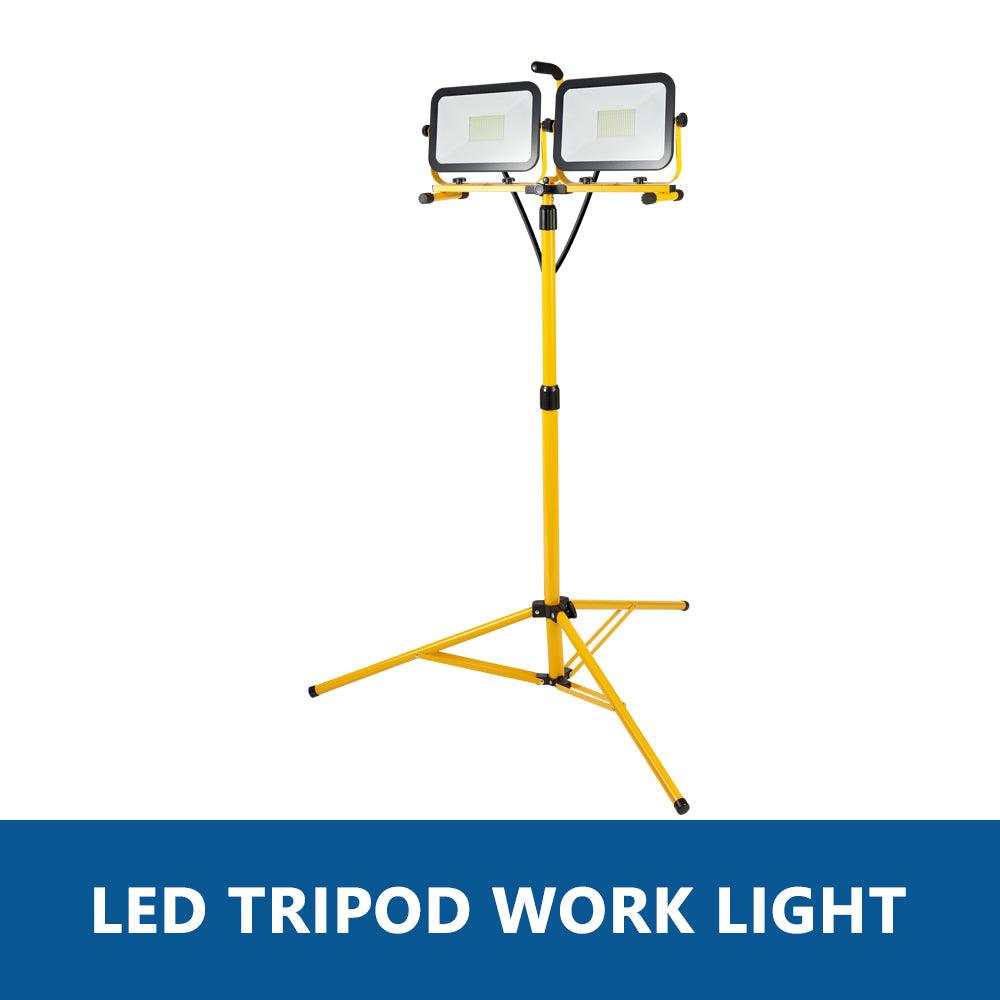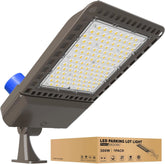-
G GJIA LED Wall Pack Light, Dusk to Dawn Photocell, 5000K
- from $49.99
$59.99- from $49.99
- Unit price
- per
-
G GJIA 30W LED Mini Wall Pack Light, Dusk to Dawn Sensor, 3600LM
- from $39.99
$46.00- from $39.99
- Unit price
- per
-
G GJIA 150W, 21,000LM LED Parking Lot Lights with Arm Mount, Dusk-to-Dawn
- from $82.99
$129.99- from $82.99
- Unit price
- per
-
G GJIA 300W 42,000LM LED Parking Lot Lights with Arm Mount, Dusk-to-Dawn
- from $129.99
$189.99- from $129.99
- Unit price
- per
-
G GJIA 200W 28,000LM LED Parking Lot Lights with Arm Mount, Dusk-to-Dawn
- from $89.99
$139.99- from $89.99
- Unit price
- per
-
-
G GJIA LED Outdoor Solar Street Light 80W 18,000LM with Motion Activated Sensor 5000K
- $699.99
$899.99- $699.99
- Unit price
- per
-
· Average Life: 50,000
· Wattage: 10-80W
· CCT: 3000K/4000K/5700K
· Surge Protection: 10kV
· Voltage: 120-277V
· Ambient Temperature: -20°C to 50°C
· Efficiency: 160-180lm/W
· Ratings: IP66, cETLus Listed, DLC
· Beam Angle: 30° or 60°
· Warranty: 5 years warranty
- Average Life: 50,000
- Wattage: 10-80W
- CCT: 3000K/4000K/5700K
- Surge Protection: 10kV
-
G GJIA LED Outdoor Solar Street Light 120W 21,000LM with Motion Activated Sensor 5000K
- $999.99
$1,009.99- $999.99
- Unit price
- per
-
· Average Life: 50,000
· Wattage: 10W-120W
· CCT: 3000K/4000K/5700K
· Surge Protection: 10kV
· Voltage: 120-277V
· Ambient Temperature: -20°C to 50°C
· Efficiency: 160-180lm/W
· Ratings: IP66, cETLus, DLC
· Beam Angle: 30° or 60°
· Warranty: 5 years warranty
- Average Life: 50,000
- Wattage: 10W-120W
- CCT: 3000K/4000K/5700K
- Surge Protection: 10kV
High Bay Lights
Popular Products
- from $48.99
$53.99- from $48.99
- Unit price
- / per
- from $44.99
$59.99- from $44.99
- Unit price
- / per
- from $164.99
$219.99- from $164.99
- Unit price
- / per

Motion Activated
LED Linear High Bay: These lamps are rectangular in shape and have a more concentrated beam. They can be suspended and surface-mounted. Equipped with infrared motion activation sensor, when the presence of temperature organic life is detected, it can automatically activate the light switch.
Auto-On at Night, Auto-Off at Daylight (Dusk to Dawn)
LED Parking Lot Lights
LED parking lot lights illuminate large outdoor parking lots. They provide even illumination, improving visibility and safety for drivers and pedestrians. Energy efficient, equipped with photocells, and with a long lifespan, these lights are ideal for parking lots.
LED Wall Pack Lights
Mounted on the exterior walls of buildings, half-cut and full-cut wall lights are available for your choice. Provide perimeter lighting for warehouses, and the lights can automatically turn on and off depending on the day and night.
Why Choose GGJIA?
- Quality Guarantee: Up to 5 years of product warranty ensures peace of mind.
- 30-Day No-Reason Return: Hassle-free returns within 30 days for any reason.
- Free Shipping: Enjoy complimentary shipping on all orders.
- 2-7 Day Delivery: Fast shipping with delivery in just 2 to 7 days.
- 24/7 Online Customer Service: Our support team is available around the clock to assist you. For help, contact us at sales@ggjia-led.com.
FAQs About Motion Sensor
Q: Dusk to dawn photocell or PIR sensor which is better?
Dusk to Dawn Photocells provide automatic, continuous lighting control based on natural light levels, ideal for outdoor areas needing all-night illumination, while PIR sensors activate lights only when motion is detected, offering energy savings and enhanced security in low-traffic or security-priority areas. GGJIA's products support both options, allowing flexible, energy-efficient lighting solutions for various applications.
Q: What is light sensitive sensor?
Definition. Light sensors are a type of photodetector (also called photosensors) that detect light. Different types of light sensors can be used to measure illuminance, respond to changes in the amount of light received, or convert light to electricity.
Q: What is the best light for light sensitive eyes?
We recommend using only either warm white LED, or, preferably, incandescent light bulbs, if light sensitivity is a problem.
Q: What is motion sensitive lights?
Therefore, the sensors are typically sensitive in the range of 8 to 12 micrometers. The devices themselves are simple electronic components not unlike a photosensor. The infrared light bumps electrons off a substrate, and these electrons can be detected and amplified into a signal.
Q: How do light sensitive bulbs work?
They way they work is the sensor detects wavelengths that are not produced by the bulb. The easiest way is to detect the near infra-red or UV light from the sun. Depending on the phosphor type for the bulb you could actually detect visible light.
Q: Is LED safer than UV?
LED bulbs are thought to be safer than UV bulbs, as they transmit weaker rays. With prolonged exposure to LED light (vs. UV light), it is considered not as hazardous, as for example with excessive tanning, which can darken the skin and may lead to skin cancer with prolonged exposure to the sun's UV rays.
Q: What is the best light for sensitivity?
If you can, try to light your indoor space with natural lighting, incandescent bulbs, track lighting, or desk lamps with warm pink, white, or peach bulbs. Light from the orange or red end of the spectrum will cut some of the painful blue light and will help minimize glare.
Q: What are the light sensitive devices?
Photoresistors, also known as light dependent resistors (LDR), are light sensitive devices most often used to indicate the presence or absence of light, or to measure the light intensity.
Q: Do phones have light sensors?
These passive, seemingly innocuous smartphone components receive light from the environment and adjust the screen's brightness accordingly, like when your phone automatically dims in a bright room. Unlike cameras, though, apps are not required to ask for permission to use these sensors.
Q: Do sensor lights waste electricity?
If your household is pretty good with automatically turning light switches off, motion sensors might actually cost you more to run than regular lights. But for those who constantly accidentally leave lights on, a sensor light will definitely help in cutting down your electricity bill.
Q: Why are sensor lights good?
One of the major benefits of the installing sensors is the financial return. Significantly reducing electrical consumption by either dimming the lights down or switching them off when they are not needed directly reduces electricity charges and indirectly also reduces maintenance costs.
Q: What are the limitations of light sensors?
Limited Sensing Capabilities: LDRs primarily detect changes in light intensity, making them sensitive to ambient lighting variations. This can skew accuracy in environments with fluctuating lighting, shadows, or changes in light sources, limiting their effectiveness in precise detection applications.
Q: How does a light sensor detect light?
Light sensors work by the photoelectric effect. Light can behave as a particle, referred to as a photon. When a photon hits the metal surface of the light sensor, the energy of the light is absorbed by the electrons, increasing their kinetic energy and allowing them to be emitted from the material.
Q: Are LEDs heat sensitive?
Despite the fact that they run much cooler, LEDs can be a little sensitive to heat. If the light emitting diodes get too hot, then this can really hamper their lifespan and cause them to burn out when they shouldn't. Using the right bulbs in the right fitting will end this risk.
- Choosing a selection results in a full page refresh.





























